What CDOT Doesn’t Do
Debunking Common Misconceptions About CDOT
Feb. 13, 2024 - CDOT does a lot more than you think. But we also don’t do some of the things you might think we do. So, before you call in a pesky pothole on your neighborhood street, take a look at some of the dos and don’ts of CDOT’s domain.
-
Maintain city or residential streets
CDOT’s territory spans 23,000 miles of state highways and interstates — which does not include city or residential streets. For issues on local roads, your first stop should be your municipality’s public works department.
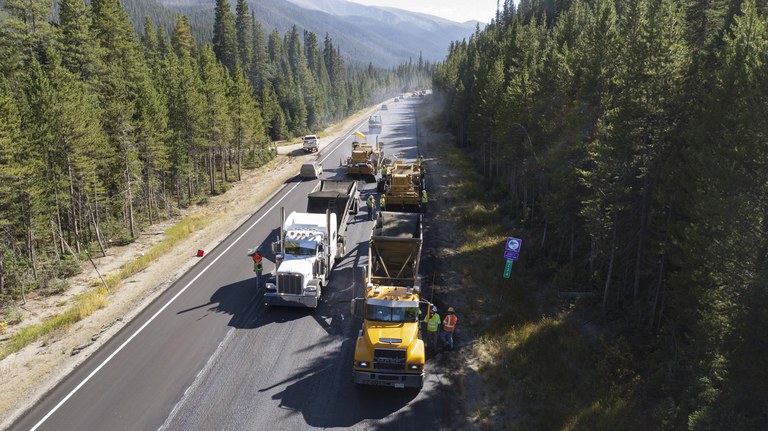
CDOT paving operations on US 40/Berthoud Pass -
Snowplow city or residential streets
While our snow fighters expertly handle 23,000 miles of highway and interstate, your local roads fall under your municipality’s care. Yes, it’s a big job, and just like you, traffic can make it a bit tricky for our plow drivers, who might find themselves in a traffic jam or two. Unfortunately, we can’t control the traffic, just like we can’t control the weather – so this may lead to delays in plowing certain roads.
When snow is in the forecast, our snow fighters prepare for it days in advance. CDOT mobilizes plows at the start of a storm and may put down a layer of liquid de-icer once snow starts to fall to help prevent the precipitation from freezing to the roadway. After the layer of de-icer is applied, snowplows are operated around-the-clock on the state’s most heavily traveled roadways applying both liquid and solid de-icing products until their services are no longer needed. On roadways with fewer vehicles, snow removal hours may be limited.
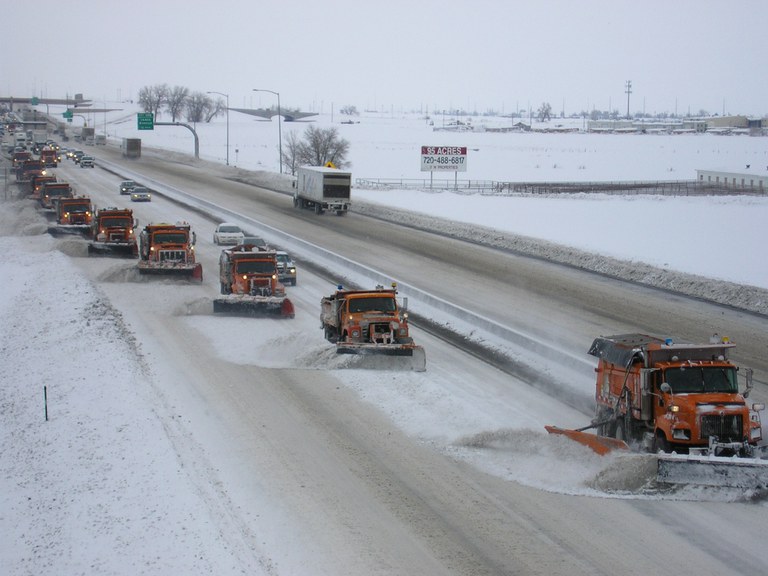
CDOT plows Colorado highways and interstates, not city or residential streets -
Get funds from marijuana tax revenue
Contrary to popular belief, Colorado's marijuana tax revenue doesn't pave the way for road repairs. Instead, it supports homelessness, housing, marijuana regulation and education, small business investment, and contributes to the state's general fund. -
Take sole responsibility for cleaning up litter on the highways
Yes, CDOT plays a part in keeping state highways and interstates litter-free, but the public needs to do their share. It is everyone’s responsibility to secure their loads and not use the highway as their personal trash can. Roadside litter costs millions of dollars annually to control and it can be impossible to keep up with. CDOT has an Adopt-a-Highway program to help with this, which involves groups cleaning litter from small stretches of highway at least four times a year. Consider joining our Adopt-a-Highway program and contribute to a cleaner environment.
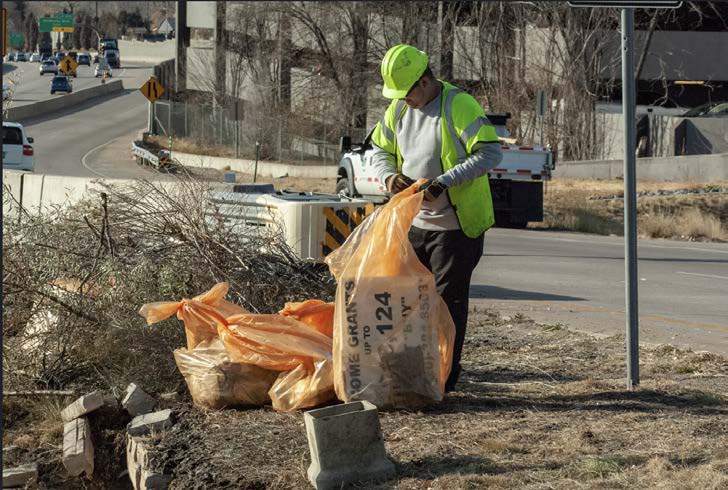
CDOT cleans up litter and debris from Colorado highways and interstates, but it’s the public’s job to secure their loads and refrain from littering. -
Only fixes potholes and plows roads
CDOT maintenance and operations encompasses a broad spectrum of tasks, tackling various projects beyond the obvious. There's more to it than just plows and potholes:
- Traffic monitoring and incident management
- Avalanche control
- Rockfall mitigation
- Communication systems management
- Repairing and rebuilding infrastructure
- Safety Patrol
- Vegetation management
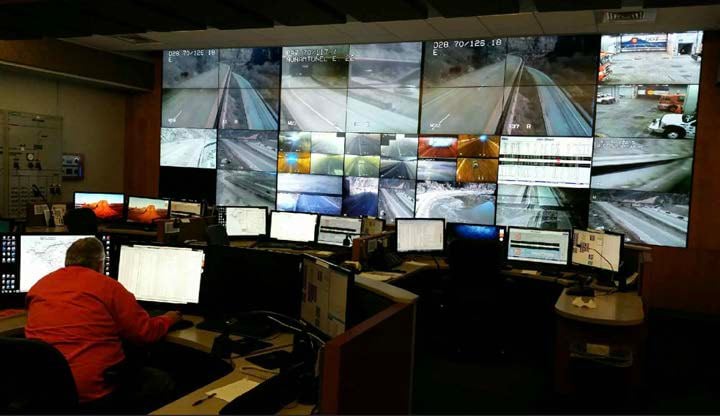
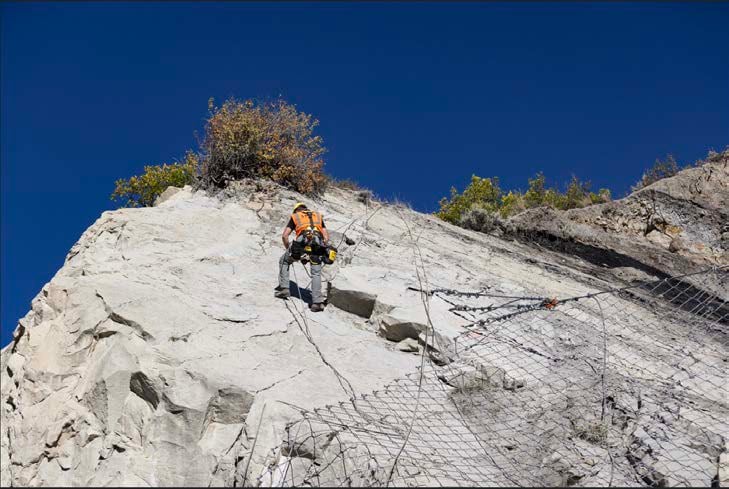
-
Wait around for something to break
It's easy to think of maintenance crews as the unsung heroes who only jump into action when something goes wrong. However, the truth is that CDOT maintenance is not just reactive; it's a proactive force that anticipates and mitigates potential issues before they become bigger problems. In addition to regular, routine inspections, CDOT maintenance teams conduct avalanche and rockfall mitigation, and employ innovative technologies to monitor the health of roads and bridges across Colorado. This allows us to analyze patterns, predict wear and tear, and address maintenance needs before they become emergencies. So, the next time you see a CDOT maintenance crew on the road, know that they're not just fixing today's problems— they're building a foundation for a smoother, safer future.
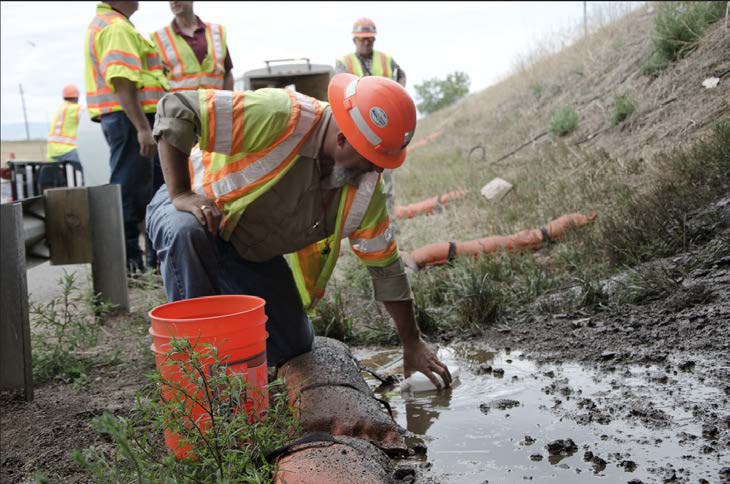
A CDOT environmental engineer collects samples to assess potential environmental impacts of bridge cleaning on ground water. -
Stand around on a project
You’ve been sitting in traffic — now frustrated and running late — when you drive by the road work that’s been slowing you down. You see a CDOT crew, and it looks like only one person is working while the rest just stand around. In the dynamic world of CDOT maintenance projects, the notion of a lone worker toiling away is far from the truth. Maintenance projects, whether they involve repairing roads, bridges or other vital infrastructure, are complex endeavors where much more happens than meets the public eye. CDOT ensures that each team member contributes to the collective knowledge and expertise, enhancing safety protocols and minimizing risks.
The next time you hit the road or spot a CDOT snowplow in action, remember the unseen efforts and teamwork that keep Colorado moving smoothly. Explore career opportunities with CDOT to be a part of this impactful journey.
